
Not a boat or canoe, a kayak is more of a personalized watercraft that's small and nimble enough to plow through rough waters, yet comfortable enough to spend a day fishing on. That's always been the mission of kayaks which date back 4,000 years to when Eskimos began using them for tracking and hunting sea lions, seals, whales, and various fish.
In fact, the word kayak itself literally means "hunter's boat" in their native language of Inupiat. During those times, kayaks were crafted by hand out of bones and stretched animal skins. Because they played such an essential role in survival, kayaks were extremely prized and personal possessions.
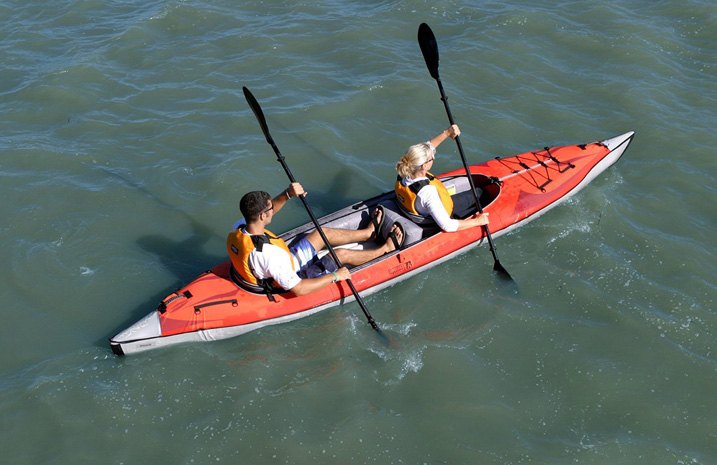
Today, kayaks have a wide variety of uses that are also extremely personal. Nature lovers appreciate how a kayak lets you enjoy the calmness and serenity of being on the water without the commotion and noise of a loud boat engine. Approaching and observing wildlife in their natural environments along the water's edge is easy when you can glide silently in for a close-up look.
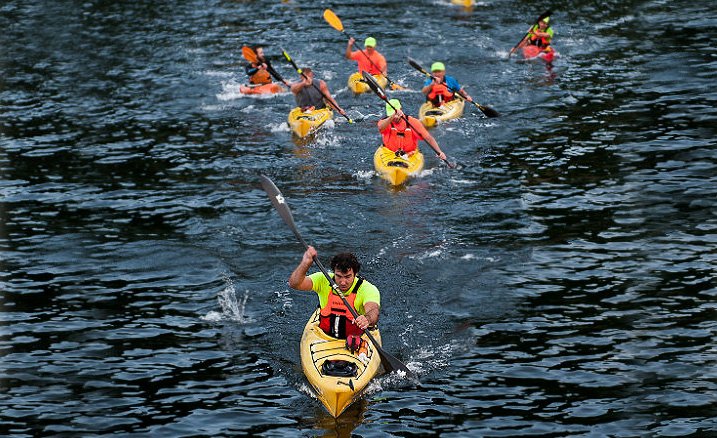
Those who love fast-paced competitiveness also appreciate how kayaks, slim and trim in nature, become more an extension of the human body than a heavy mechanical conveyance. Watersports without mechanized engines are all about athleticism and discipline, and kayaks can play a big role in developing and showcasing strength and stamina in spades.
The experience of kayaking is also tremendous fun to share with others, whether it's with a group in separate individual kayaks or with a loved one in a single multi-person kayak. In this article, we'll discuss the various styles of kayaks that exist along with some key fundamentals to know when choosing one.
Kayak Dimensions
Kayaks come in a range of lengths and widths. Naturally, overall size will determine how easily any particular kayak can be transported and carried. But it's important to understand how length, width, and overall curvature can affect the way a kayak handles on the water.
Length
If you plan on going whitewater rafting, a shorter kayak (8' or less) will be the easiest to maneuver and turn in tricky conditions. If you want to cover longer distances and/or travel at higher speeds, long length kayaks (16' - 19') with narrower and more defined keel (front) sections will cut through the water with less resistance and track in a straight line easier.
Width
Wider kayaks are easier to balance and turn, and are less likely to flip over because of their greater stability on the water. Wider sit-inside kayaks also provide more flexibility for crossing your legs inside the hull in order to find comfortable positions.
Because more water must be pushed out of the way up front, more width means increased drag. Plus, you're more likely to get wet from splash-up in a wider kayak.
Longer paddles must be used to ensure your hands don't scrape against the wider hull. Such paddles require more torque to use and can put more strain on shoulder joints.
Rocker
The term "rocker" refers to the amount of lengthwise curvature a kayak has from front to back, similar to that of a rocking chair leg. Rocker can affect overall maneuverability in the water.
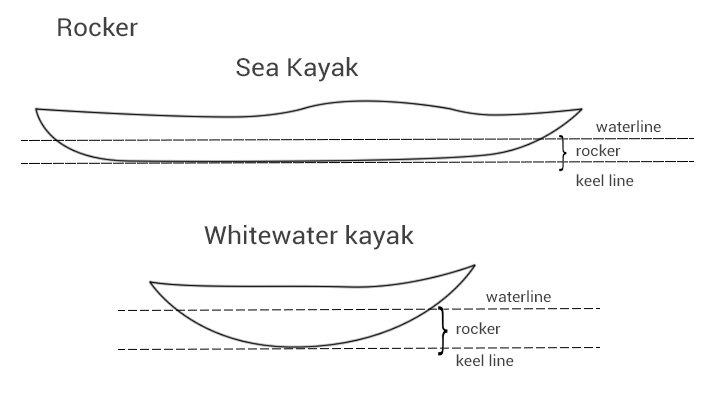
A kayak with no rocker means the entire length of its bottom area sits below the water line. A heavily rockered kayak with more curvature may have bow and stern end areas that rise above the waterline. A rockered kayak with a shorter effective waterline will be easier to turn and maneuver, but it will also be less likely to lock into a wave and track in a straight line.
Fishing Kayaks vs. Recreational Kayaks
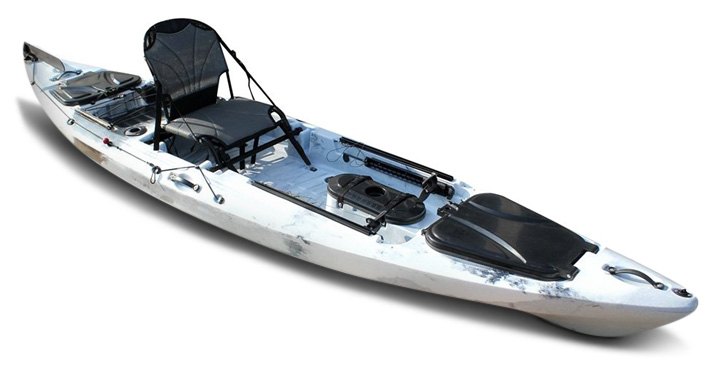
Fishing kayaks (a.k.a. "angler" kayaks) are purpose-built to hold a variety of fishing rods and equipment. Consequentially, stability and sturdiness is valued over agility and performance. While they are larger and heavier, fishing kayaks tend to be comfortable and wide enough to stand up in. Often, you'll see a number of handy compartments meant to hold bait, lunch provisions, electronics, a cooler, and more.

Recreational kayaks are built for sport to be light, compact, and agile. They'll be a snugger fit, but they'll also maneuver and track a lot better in the water - especially if the going gets tricky over rapids. Recreational kayaks can be a bit less cumbersome to carry and load for transport.
Sit-Inside vs. Sit-On-Top Kayaks
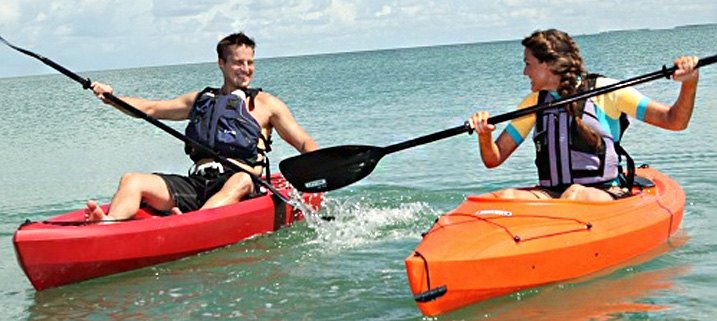
This is an instance where product names accurately reflect their designs. Choosing a "sit-inside" or "sit-on-top" kayak comes down mostly to personal preference, but we recommend weighing the advantages each style has to offer before deciding. Both types are stable and hard to flip over no matter what you do, so don't let that be too much of a worry.

With a traditional sit-inside kayak, you literally climb in and sit inside the enclosed hull with only the upper body exposed to outside elements. This allows you to use your feet and legs against the hull walls for better bracing and more efficient paddle strokes. A well-braced sitting position allows better balance in tricky situations such as travelling down a river with turbulent rapids. In cooler temperatures, it's possible to keep the hull area of inside sit-inside kayaks warm and dry by using a spray skirt (see further below) or blankets.
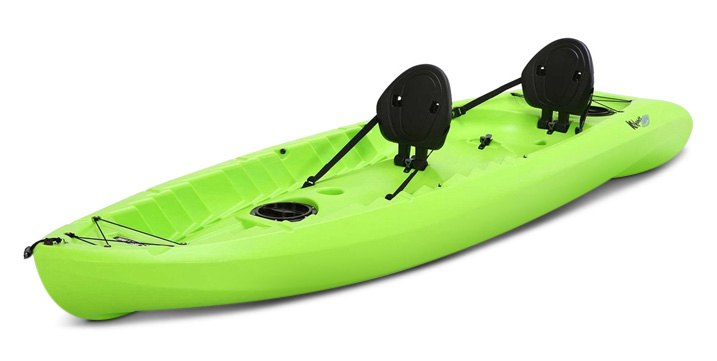
With a sit-on-top kayak, you literally sit on top of the deck because there are no covered sections. You're fully exposed to the elements, so staying dry and retaining heat won't be so easy. However, jumping in and out of the kayak for a quick swim is a breeze. Most, but not all, fishing kayaks are of this variety. Basically, sit-on-top kayaks are well suited to relaxed and open-feeling experiences on the water.
Modular Kayaks
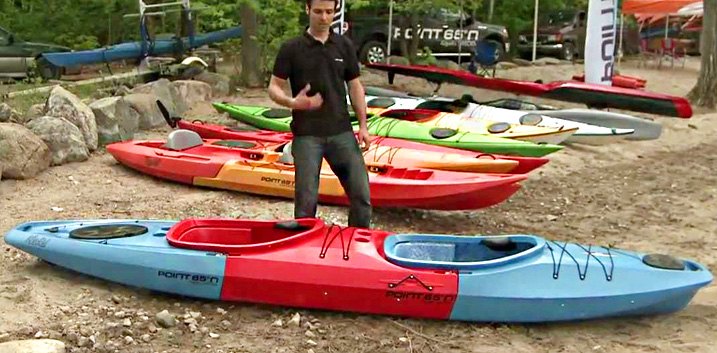
With a modular kayak, individual pieces fit together like those of a jigsaw puzzle. One advantage of this is you're able to transform a 1-person kayak into a 2-person kayak just by adding a center section between front and rear end pieces. Think of adding an extra leaf to a dining room table in order to make it longer and accommodate more guests. Because each individual front, rear, and middle section is completely sealed, the kayak will not flood even if one of the sections becomes damaged and leaks.


Broken down into pieces, modular kayaks can usually be transported inside your vehicle - saving you the cost of purchasing a canoe carrier for the roof. Modular kayaks are available in both sit-inside and sit-on-top configurations.

For many of our modular kayaks, front, rear, and optional middle pieces appear as separate individual products. Choose front and rear sections if you prefer a 1-person configuration, or add a middle section for a second seat. In other cases, the necessary sections to create a solo (1-person) or tandem (2-person) kayaks are selected in the Product Options field.
For example, the front piece and rear piece of the Point 65 Sweden Martini GTX Angler Kayak needed for a 1-person configuration are sold individually. An optional middle piece can be added at any time to accommodate another rider. Conversely, all of the pieces for various configurations of the Point 65 Sweden Mercury GTX Kayak are selected in the Product Options field.
Inflatable Kayaks

If you've got limited space for kayak transport and storage, consider going with an inflatable kayak. First, it's important to stress that these aren't flimsy blow-up rafts. Inflatable kayaks are built to be durable, with multiple layers of fabric-reinforced polyurethane, woven nylon, and/or PVC type materials. Most inflatables contain reinforced bow and stern areas with rigid tracking fins to ensure they always cut a clear path through the water. We do stress, however, that an inflatable kayak is not recommended for use in any areas where you may end up against hard rocks repeatedly.

Inflatable kayaks include desirable features found on hard shell ones such as supportive seats with backrests, firm foam flooring, storage pockets, D-ring loops for paddles/tying down, fishing pole holders, and more.
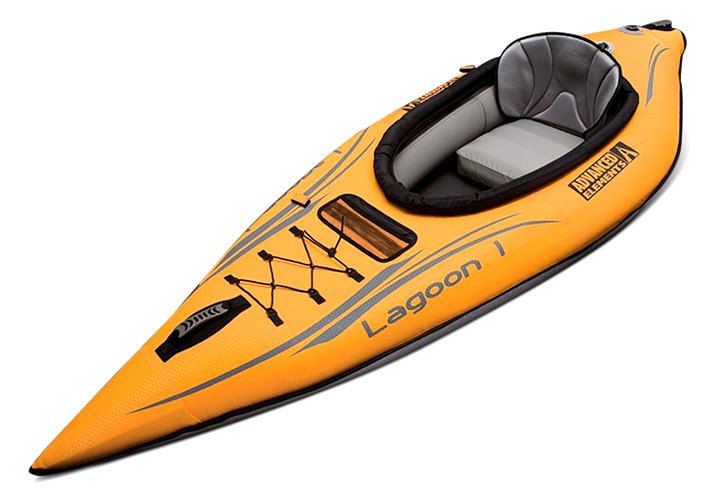
When it comes to inflatables we offer, we'll start with single-person kayaks of the sit-inside variety. In order of length, we've got the Advanced Elements Firefly 7' Solo Inflatable Kayak, Advanced Elements Lagoon 8' Solo Inflatable Kayak, Sevylor Quikpak K5 10' Solo Inflatable Kayak Kit, Advanced Elements Advanced Frame 10' Sport Solo Inflatable Kayak, and Advanced Elements AdvancedFrame 13' Expedition Elite Solo Inflatable Kayak.

If you prefer a solo sit-on-top setup, check out the Advanced Elements Packlite 7' Solo Inflatable Kayak, International Leisure Flash Solo Inflatable Kayak, Airhead 9' 1-Paddler Performance Travel Kayak, Advanced Elements Straitedge 9' Solo Inflatable Kayak, and Advanced Elements Straitedge 10' Angler Pro Solo Inflatable Kayak (fishing).

If you prefer an inflatable kayak designed for two, we offer the Sevylor Fiji 2-Person 10' Inflatable Kayak (sit-on-top), Airhead Roatan 2 Rider Inflatable Kayak (sit-on-top), Advanced Elements Island Voyage 11' 2-Person Inflatable Kayak (sit-on-top), Sea Eagle Explorer 2-Person 12' Inflatable Kayak Kit (sit-on-top), Airhead 12' 2-Paddler Performance Travel Kayak (sit-on-top), Advanced Elements Lagoon 12' 2-Person Inflatable Kayak (sit-inside), Advanced Elements AdvancedFrame 15' Convertible 2-Person Inflatable Kayak (can change between number of riders and styles), and the Advanced Elements Straitedge 13' 2-Person Inflatable Kayak (sit-on-top).

We've even got inflatable kayaks that carry 3 people such as the Sevylor Big Basin 3-Person Kayak, Sea Eagle Sport 3-Person 12' Inflatable Kayak, and Sea Eagle Explorer 3-Person 14' Inflatable Kayak Kit. We've also got you covered with a range of inflator pumps operated by hand, foot, and electric power.
Gear You Need When Kayaking
Paddles

Selecting the right length of paddle is important. A paddle that's too short means you have to hold it too close to the kayak - and you'll likely end up hitting your hands against the hull as you row. Too long a paddle becomes cumbersome to handle and makes it hard to get strong rowing strokes in. Determining optimum paddle length for you personally involves two factors: your body height, and the width of the kayak. The chart above is a good general reference point to use.
Life Vests

It goes without saying that wearing a life vest at all times while kayaking, no matter how great a swimmer you are, can save your life. In the event you're ejected from the kayak, life vests will pull you up to the surface if you become disoriented or even unconscious.
Helmets

Wearing a helmet will do a lot to protect you from head injury and unconsciousness should you suffer a head impact against rocks or the kayak itself.
Spray Skirts

A spray skirt serves to seal off the opening of a sit-inside kayak, bridging the gap between you and the kayak itself to keep water out and warmth in. If you're bringing any kind of phone, GPS, or other electronic devices along inside the hull, you'll definitely want one of these.
These are designed to draw snugly around the waist and stretch to fit over all edges of the kayak opening. Flexible materials such as neoprene allow normal movement without compromising the seal.

This concludes our look at kayaks. In our Kayaking section, you'll also find other accessories such as kayak holders, bilge pumps & sponges, carrying bags, specially designed sun shades, and more.
We also encourage you to check through other sections of RECREATIONiD where you'll find some great water sports equipment, remote control toys as well as products for climbing, camping & hiking, fishing, optical equipment, winter sports, helpful equipment for pets, and much more. Should you have questions about anything on our website, we'll be happy to help on the phone seven days a week!
